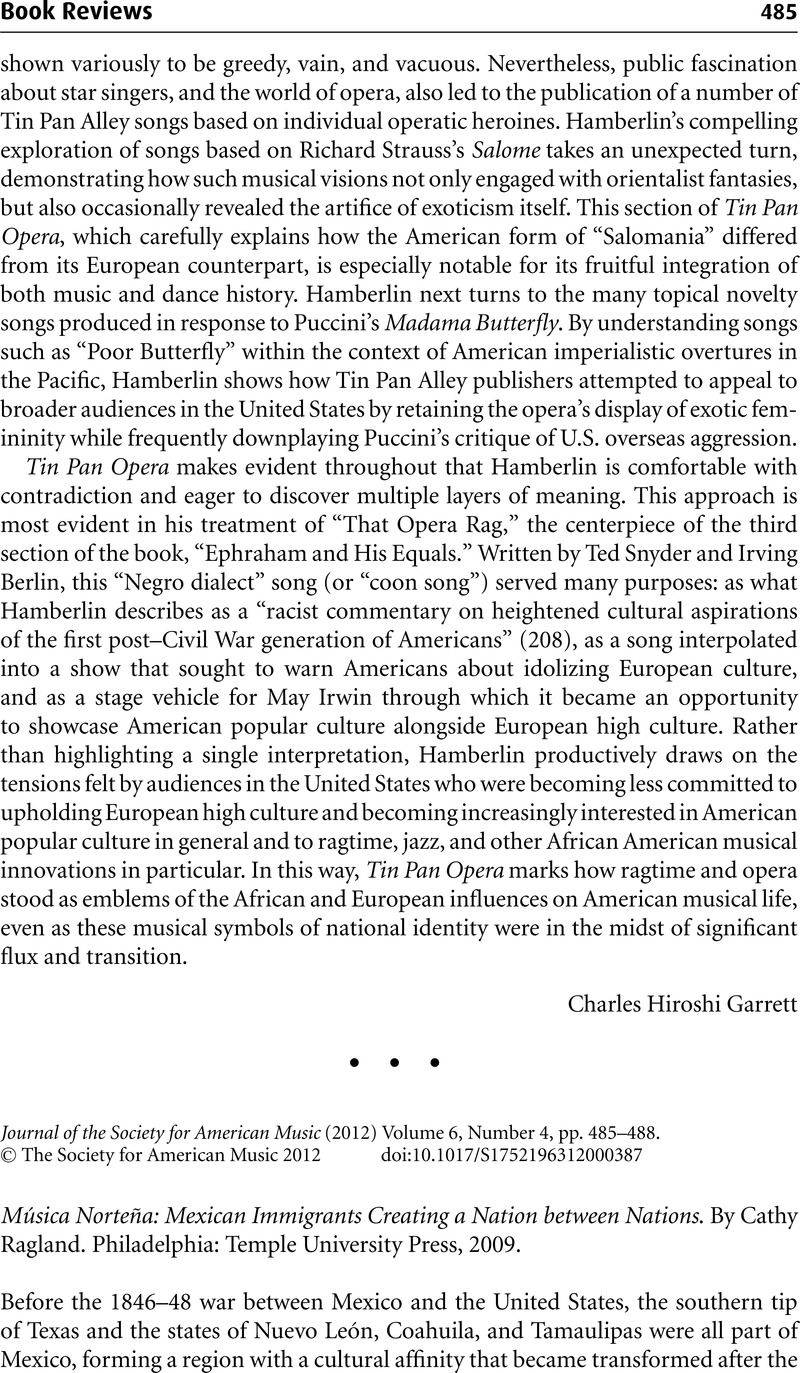No CrossRef data available.
Published online by Cambridge University Press: 30 November 2012

1 Paredes, Américo, A Texas-Mexican Cancionero: Folksongs of the Lower Border (Urbana: University of Illinois Press, 1976)Google Scholar; Paredes, , With His Pistol in His Hand: A Border Ballad and Its Hero (Austin: University of Texas Press, 1958)Google Scholar; Peña, Manuel, The Texas-Mexican Conjunto: History of a Working-Class Music (Austin: University of Texas Press, 1985)Google Scholar; Peña, , The Mexican-American Orquesta: Music, Culture, and the Dialectic of Conflict (Austin: University of Texas Press. 1999)Google Scholar; and Peña, , Música Tejana: The Cultural Economy of Artistic Transformation (College Station: Texas A&M University Press, 1999)Google Scholar. Also see Broyles-González, Yolanda, Lydia Mendoza's Life in Music—La Historia de Lydia Mendoza: Norteño Tejano Legacies (New York: Oxford University Press, 2001)Google Scholar; Dyer, John, Conjunto: Voz del pueblo, canciones del corazón (Austin: University of Texas Press, 2005)Google Scholar; Burr, Ramiro, The Billboard Guide to Tejano and Regional Mexican Music (New York: Billboard Books, 1999)Google Scholar; Miguel, Guadalupe San Jr., Tejano Proud: Tex-Mex Music in the Twentieth Century (College Station: Texas A&M University Press, 2002)Google Scholar.
2 The onda grupera (roughly translated as the “band wave”) is a hybrid style (and not necessarily a genre) influenced by rock, cumbia, música ranchera, música norteña, bolero, and the romantic ballad. It uses the typical rock band instrumentation of electric guitar, electric bass, drum set, and keyboards.